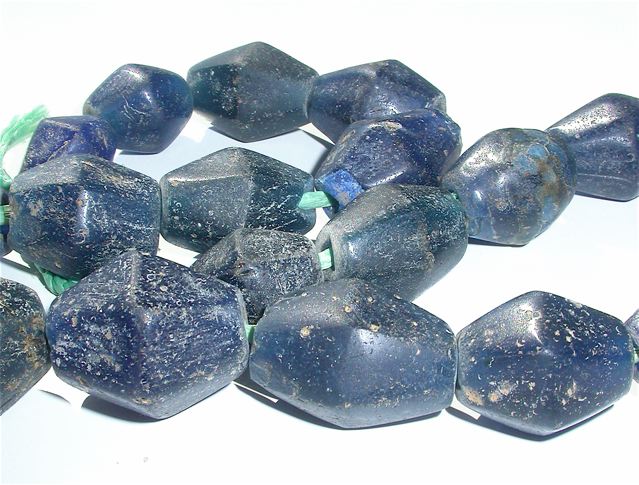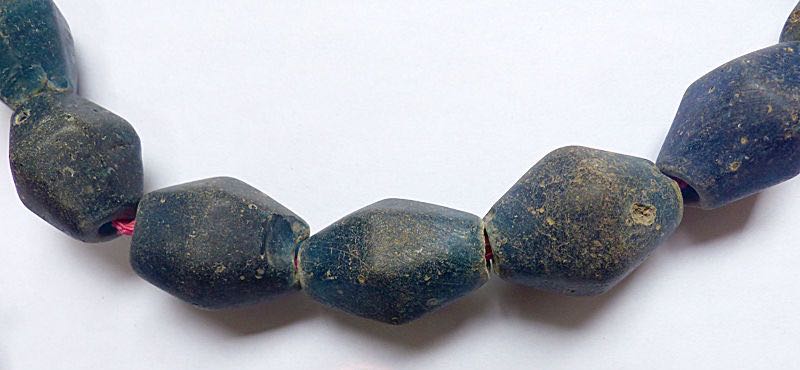| Yes, definitely authentic | |||||
| Re: So beautiful and yet… bead thoughts?? -- lindabd | Post Reply | Edit | Forum | Where am I? | |
02/13/2016, 12:21:17
Just to add to what Shinji and Hans have said, the structure of the beads makes it clear. If they were fakes they would almost certainly have been wound (or occasionally lapidary worked from bottle glass). Like almost all of the monochrome blue and green beads that were manufactured (like these) between the 5th and 8th centuries in East Java, these are made from rolled pads that were worked while still hot into the required shape. Sometimes they may look as though they're wound because the flow lines of the glass can frequently be lateral as well as lengthwise (see the hexagonal blue bicones that I'll attach). Also, unlike Islamic beads where the junction between the two ends of the pad is frequently apparent, in these Jatim beads the joint is generally hidden by the subsequent shaping.
I like these devitrified beads a lot, too, Linda. Frequently they are polished after they've been dug up, and that's fine also. The majority of excavated Jatim beads show substantial signs of devitrification, probably because of the volcanic soils in which they were buried, and also perhaps because of flaws in the production process (too rapid cooling?). This condition is imitated, as Fred says, by acid treatments, though it's still generally possible to distinguish the difference.
Incidentally, Fred, I don't think there's any likelihood that this would have been Egyptian glass. After all, blue glass, in a wide variety of shades, was manufactured in huge quantities from the 3rd or 4th centuries BCE at numerous Indo-Pacific glass- and bead-making sites in South and Southeast Asia. And as for Egyptian glass being used as ballast in trading ships, I know of no evidence for that at all. There were much cheaper options obviously, and in any case most of the vessels that plied the Southeast Asian trade routes were able to sail with full cargoes from one port to the next, as we know from the many shipwrecks that have been discovered.
Lastly, let's make it clear again that there was no substantial glass-bead making industry in Java in Majapahit times. Majapahit jewellery, as we see from the sculpture of the period, was primarily metal-based (gold, silver, bronze), sometimes with the addition of semi-precious stones (carnelian, other forms of agate, and rock crystal).
Best wishes,
Will


|